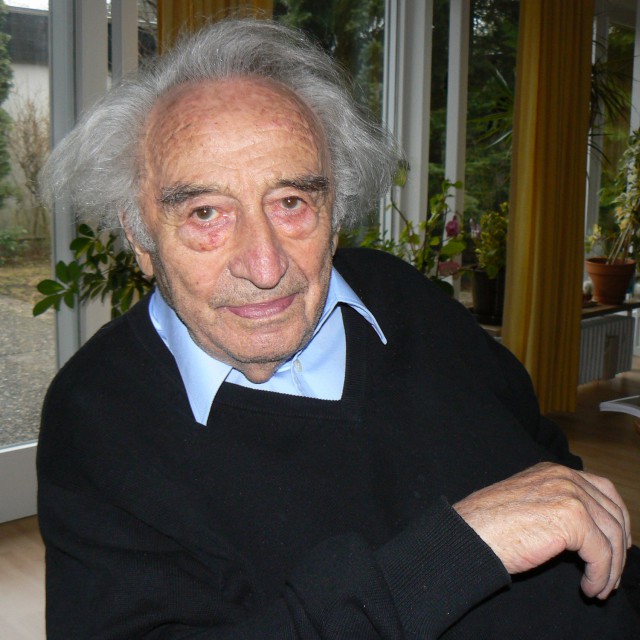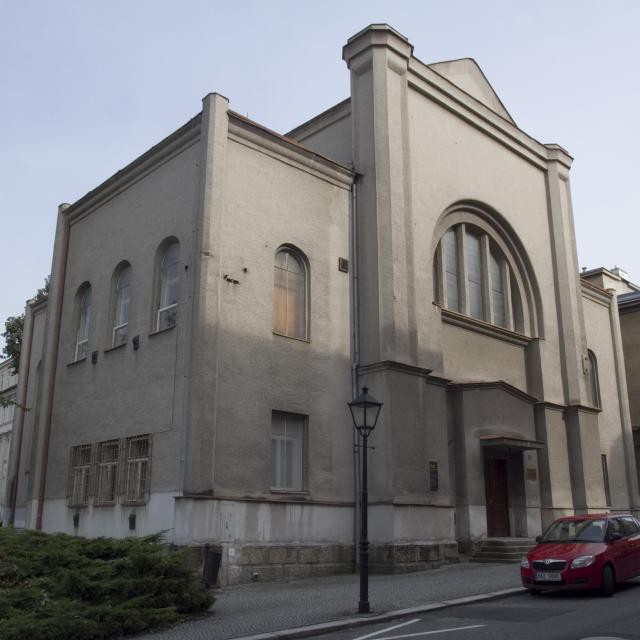They threw the books out and stomped them
The synagogue in Nový Jičín fell victim to the Kristallnacht rage, as did many Jewish sites in the Czechoslovak borderland. The pogrom took place in the night of 9 to 10 November 1938. Jewish shops, synagogues and cemeteries were destroyed in Germany, Austria and the Sudeten. Some fifty synagogues fell prey to the pogrom in the Sudeten borderland, annexed by Germany not long before. Most of them were burned down and devastated, such as the synagogue in Liberec. Národní listy of 17 November 1938 described the Kristallnacht in Nový Jičín as follows: “As in other cities in Germany, there were anti-Jewish demonstrations in the occupied Nový Jičín as well. The Germans attacked the synagogue and wanted to set it on fire, but then refrained from doing so because the gas lighting system in the temple could cause an explosion.” Max Mannheimer, a Nový Jičín native, confirms that the synagogue was not set on fire, having witnessed its destruction. However, he cites the proximity of the town’s gasworks as the reason: “The synagogue in our town could not be set on fire, as it was close to the gasworks. The Germans threw prayer books, Torah scrolls and prayer shawls out on the street in front of the synagogue and stomped them. The next day, a police truck came along with New Jičín Jews aboard. Two policemen came upstairs for my father, saying they would take him to protective detention to be safe. The policemen pointed at me as well. My mother said I was only seventeen though I was eighteen and half already. They detained all men aged eighteen to sixty five.”
Hodnocení
Abyste mohli hodnotit musíte se přihlásit!
Trasy
Příběh není součastí žádné trasy.
Komentáře

Max Mannheimer
Max Mannheimer was born in Nový Jičín (Neutitschein in German) on 6 February 1920. He grew up the eldest of the five children of Jakub Mannheimer and his wife Markéta (née Gelb). He went to the Business School in Nový Jičín from 1934 to 1936. In 1936 he started working at the J. Schön & Co department store in Znojmo-Starý Šaldorf. Max Mannheimer’s family lived in Nový Jičín until 1938, then moved to Uherský Brod after the occupation of the Sudeten and the pogrom. The Nazis arrested Max’s brother Erich in 1942 and took him to the prison in Uherské Hradiště, then to Kounic Halls in Brno and then to Auschwitz. He had given a young man named Lazarowicz the address of a person who trafficked people to Slovakia for cash. In 1942 Max Mannheimer married Eva Bocková. His family was deported from Uherský Brod in late January 1943 via Terezín to Auschwitz where Max’s parents, sister Kateřina, wife Eva and other relatives died in the gas chambers. Max’s younger brothers Arnošt and Edgar made it through the selection but Arnošt fell sick in Auschwitz. Max and Edgar came to the Warsaw ghetto in October 1943. Edgar was infected during the spotted fever epidemic but recovered. In 1944 both brothers went from the Warsaw ghetto to Dachau, marching to Sochaczew first and then by cattle cars. Following a three-week quarantine in Dachau, Max was relocated to the Karlsfeld subcamp. The work group that included Edgar was relocated to the Mühldorf subcamp in January 1945 and Max followed his brother two weeks later. On 28 April 1945 the Nazis ordered to clear the Mühldorf camp and the prisoners headed west. The Brothers Mannheimer were liberated in Tutzing two days later. Released from hospital, Max Mannheimer returned to his native Nový Jičín and fell in love with the German girl Elfriede Eiselt. He married her and they lived in Munich with daughter Eva from 1946. Elfriede died of cancer in 1964. Max got married the third time one year later, this time with the American Grace Franzen, née Cheney, and they have son Ernst. Max Mannheimer worked as a leather goods shop manager in Munich until retirement. He was named a Nový Jičín Citizen of Honour in 2010. Two years later, he was the first holocaust survivor ever to receive the Charles IV. Award at the Sudeten-German Days in Nuremberg. He lives near Munich these days, taking part in school discussions and lecturing at the Dachau Concentration Camp. He also paints and writes books.


